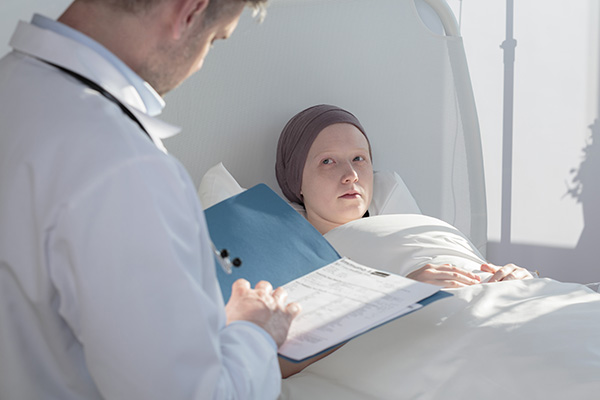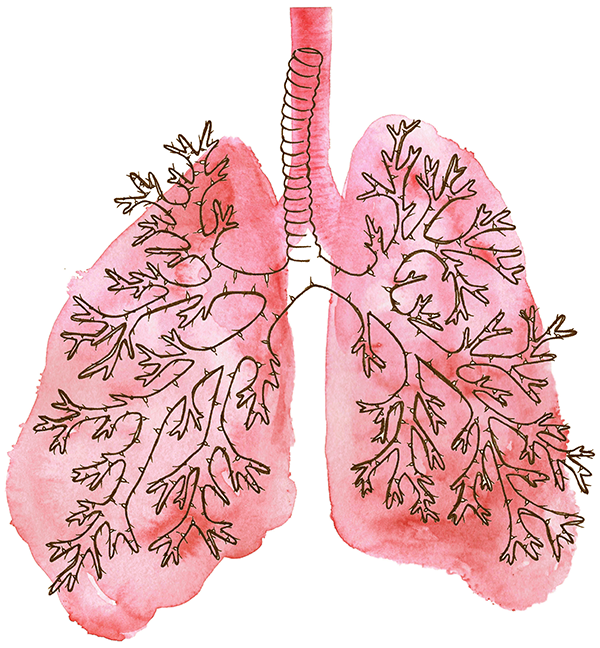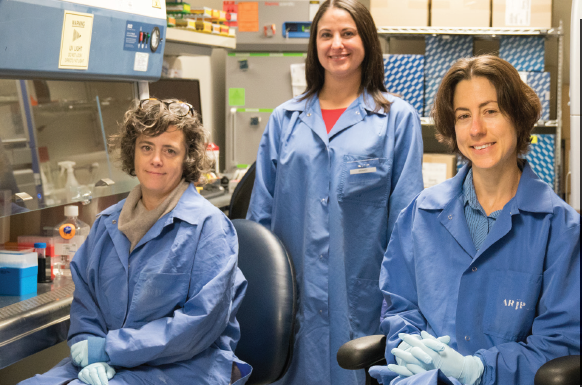A New Test Uses New Technology

Five-year-old Jacob’s parents rushed him to the hospital. He was struggling to breathe, his small lips and fingernails were bluish, and he was too weak to respond to his mother’s voice. She was scared. The doctors were worried. Jacob had also been battling Leukemia and was in the midst of undergoing chemotherapy. In the intensive care unit, Jacob was immediately intubated to help him with his breathing.
Based on his symptoms, Jacob likely had developed severe pneumonia. To derail its virulent advance on his lungs, doctors needed to know what was causing the pneumonia—what type of bacteria, fungus, or virus triggered the infection. Knowing this would help doctors know which medicine would work best to help Jacob’s body fight the pneumonia.
Typically, this might mean a series of tests—and waiting to find out the results—to eventually identify the treatment (medication) that would work best. But for a child as sick as Jacob, waiting was risky.
Patients like Jacob may benefit from a recently developed test known as Explify™ Respiratory. This next generation sequencing (NGS) test for respiratory infections detects more than 200 common and rare bacterial, fungal, and viral respiratory pathogens with a single test. Many respiratory pathogens can cause similar clinical symptoms, but treatment is different for each, and rapid identification is important.
This test may reduce the risk of inappropriate antibiotic treatment, which could potentially have harmful effects, especially for immunocompromised patients. It can also avoid sequential testing that eats up precious time and may extend hospital stays. Diagnosing patients—particularly critically ill patients and immune-suppressed patients—with suspected pneumonia can potentially require up to a dozen tests (including test panels) to determine the culprit pathogen.
It ended up identifying pathogens missed by conventional laboratory tests in 30 percent of hospitalized children being treated for pneumonia. In a separate study, it identified missed pathogens in approximately 40 percent of test-negative, immunocompromised children being treated in the intensive care unit for pneumonia.
Explify is also helpful for scenarios when very ill patients have tested negative (nothing is detected) using conventional testing and the physician suspects a missed infection. It can also identify patients who are infected with numerous and diverse pathogens.
In two recent Centers for Disease Control studies (both published in the New England Journal of Medicine), conventional testing failed to identify a potential cause of respiratory infections in about 20 percent of children and 60 percent of adult patients with community-acquired pneumonia. This is frustrating to clinicians because it may lead to excessive treatment or poor outcomes for patients and increased costs to the healthcare system.

Pediatric infectious specialist and study co-author, Andrew Pavia, MD, explained that in children, the study showed viral pathogens were much more common than bacteria causes, and that typical pneumonia-causing bacteria were less common than in earlier years, likely due to highly effective vaccines for Streptococcus pneumoniae and Haemophilus influenza type b.
“This was an important finding, but not a complete surprise. What was a surprise was that despite using state-of-art diagnostics, we didn’t have an answer for some 20 percent of the kids,” says Pavia, who is the chief of the Division of Pediatric Infectious Diseases at the University of Utah.
Robert Schlaberg, MD, Dr Med, MPH, then led a study looking at these children where no pneumonia-causing pathogens were identified, using the NGS technology that’s behind Explify. It ended up identifying pathogens missed by conventional laboratory tests in 30 percent of hospitalized children being treated for pneumonia. (This study was published in Journal of Infectious Diseases.) In a separate study, it identified missed pathogens in approximately 40 percent of test-negative, immunocompromised children being treated in the intensive care unit for pneumonia.
Future NGS studies will home in on the adult population where a cause couldn’t be detected in more than half of the adults.
“Current diagnostic techniques rely heavily on testing for suspected pathogens, which can be inconclusive and time-consuming,” says Dr. Schlaberg, a specialist in molecular infectious disease testing at ARUP. “This technology can test for a very large number of pathogens at once, whether they are expected or not. A doctor doesn’t have to suspect the cause of a patient’s infection to direct the test ordering, but can instead simply ask, ‘What is my patient infected with?’”
Most everyone knows someone who has battled pneumonia. Each year in the United States, about one million people have to be hospitalized for pneumonia—it is one of the leading causes of hospitalization for children under 5 and one the leading infectious causes of hospitalization and death among adults in the United States.
The test is another tool for physicians to rely on in diagnosing and treating patients with respiratory disease. The test is powered by Taxonomer, an ultra-fast metagenomics search engine that can mine information from the vast amounts of genomic information extracted from DNA. This DNA is found in the pathogens located in a patient specimen; in the case of respiratory issues, the sample is fluid collected from the lung (bronchoalveolar lavage fluid). Taxonomer and the Explify test were developed by ARUP Laboratories and IDbyDNA, a Silicon Valley metagenomics company; a collaboration to improve infectious disease diagnostics.
“Metagenomic testing is a paradigm shift in our approach to infectious disease diagnosis,” says Carrie Byington, MD, an expert in pediatric infectious diseases and an IDbyDNA advisor. “Compared with traditional testing modalities, the comprehensive nature of metagenomic testing will open new opportunities for identifying and understanding infectious pathogens and the roles they play in human health and disease,” says Dr. Byington, who is also dean of the Texas A&M College of Medicine.
Most everyone knows someone who has battled pneumonia. Each year in the United States, about one million people have to be hospitalized for pneumonia—it is one of the leading causes of hospitalization for children under 5 and one the leading infectious causes of hospitalization and death among adults in the United States, according to a 2015 study published in the New England Journal of Medicine. Some 50,000 people die annually from the disease.
Daily around the country, physicians experience difficulty in diagnosing and treating patients with pneumonia and other respiratory diseases. Explify can help solve these diagnostic quandaries, particularly for patients with compromised immune systems, like Jacob.
Daily around the country, physicians experience difficulty in diagnosing and treating patients with pneumonia and other respiratory diseases. Explify can help solve these diagnostic quandaries, particularly for patients with compromised immune systems, like Jacob.


















 HOME
HOME